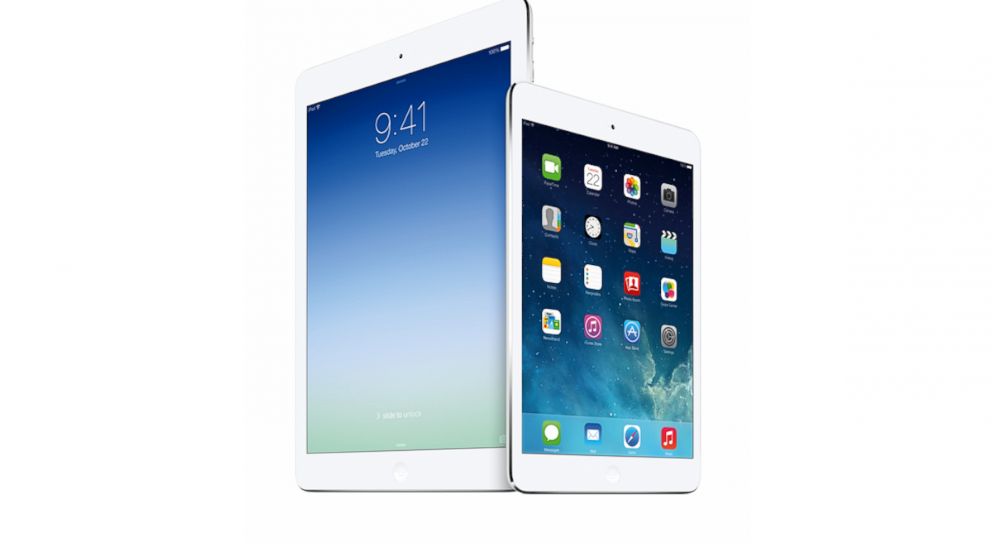Apple clings to the past with the iPad 2

Given all of the leaks that we've seen, there really weren't any surprises in today's Apple announcement. We knew that the new iPad and iPad mini would have the same basic innards as the iPhone 5s. We knew what they would look like. There was a bit of ambiguity when it came to whether or not the new tablets would have the Touch ID fingerprint scanner, but it's not the biggest surprise that the premium feature is only available on the flagship iPhone.
The iPad 2 was released in March of 2011, and in March of 2012 it was succeeded by the "new iPad" (for simplicity's sake, we'll just call it the iPad 3). At that time, the iPad 2 was dropped to the $399 price point; and, oddly, that is exactly where the tablet has stayed through the release of the iPad 4 and now the iPad Air (aka iPad 5). The iPad 3 had odd heat issues, and really the only improvements it offered over the iPad 2 were the Retina display, an upgraded camera, and a slightly upgraded processor (A5X vs A5).
Under traditional circumstances, we would have expected the iPad 3 to have been bumped down, but the iPad 3 became something of a Honeycomb for Apple. It existed because it needed to exist at the time, but we really weren't expected to keep talking about it once it was replaced (with the iPad 4 in the Apple side of this analogy, and Ice Cream Sandwich in the Android side.) But, the iPad 3 was supplanted just 8 months after its release by the iPad 4, which was launched in November of 2012. At that time, it made some sense for Apple to leave the iPad 2 in the $399 slot, because it offered a more easily visible upgrade than the iPad 3. At least consumers would see the quality difference between displays, even if the outer design wasn't that different.
That's part of the reason (we expect) why Apple introduced the iPhone 5c this year - it offers consumers a more easily discernible visual difference compared to the iPhone 5s than the iPhone 5 would have. But, that argument doesn't really follow between the iPad 4 and the iPad Air, because Apple has given the iPad a design overhaul with the newest version. Visually, there is no mistaking the iPad Air for the iPad 4. So, why is the iPad 2 still in Apple's lineup?

Why the iPad 2?
The obvious reason is the same as the other part of why Apple chose to go with the iPhone 5c: profit margin. The iPad 2 is still using the same components it launched with in March 2011, that includes a processor that is 4 generations behind, a display with half the resolution of Apple's highly marketed Retina displays, and a 0.7 megapixel rear camera. We need to repeat that last one: Apple's lower tier iPad has a rear camera that offers fewer megapixels than the original Android handset: the T-Mobile G1. Sure, megapixels are only part of the equation, but that's still pretty ridiculous.
Add in the fact that the iPad 2 is still using the A5 chipset, which has since been eclipsed by the A5X (used in the iPad 3), the A6 (iPhone 5), the A6X (iPad 4), and the A7 (iPhone 5s, iPad Air, and iPad mini 2), and the lower resolution display, and it is easy to see where Apple is getting the manufacturing savings. The iPad 2 likely costs quite a bit less than the iPad 3 or 4 would to build, meaning Apple will be making a much higher margin on every unit sold.
The other reason that seems likely for keeping the iPad 2 on the market instead of replacing it with the iPad 3 or 4 is with Apple's other tablet - the iPad mini. The original iPad mini is essentially an iPad 2 with a smaller screen and better cameras. (Once again, the iPad 2 camera is awful.) A big reason why the iPad mini has the same display resolution as the iPad 2 is so developers wouldn't have to do any work to get their apps working on the new tablet (because Apple apparently hates responsive design, as we've talked about before). So, it seems like the only other viable reason why Apple would keep the iPad 2 on the market is because it is keeping the iPad mini on sale as well, and the iPad mini can't be the only non-Retina tablet being sold (although the reasoning there is escaping us right now).
Conclusion
Ultimately, this feels like the will of Tim Cook, and his expertise in supply chain. Cook is always deeply concerned with lowering production costs, and stock on hand, and that leads to decisions like this. There is no arguing that Steve Jobs is gone now. While we can't say for sure, we get the feeling that if Steve were still in charge, instead of leaving the iPad 2 on the market to complement the iPad mini, he would have simply left the non-Retina tablets behind, and begun transitioning the ecosystem to being 100% Retina. That may have meant cutting the cord on the original iPad mini after just one year; or, it may have meant delaying the iPad mini one year and launching it with a Retina display.
The original iPad mini obviously had a place in the market given how well it has sold; and, it can't be claimed that all of the iPad minis sold over the past year would have been iPad sales if the mini didn't exist. But, this seems to prove that the decision to release the iPad mini is actually holding back the iOS ecosystem more than it is helping to push it towards the next phase of its evolution. Had Apple waited one year, and released this iPad mini 2 as the first iPad mini, and cut the cord on the iPad 2, that would have made for a much more impressive offering. Coming out of the gate with a 7.9-inch Retina display would have made more of an impact.
As is, the existence of the iPad 2 and the iPad mini don't really fulfill their duty of showing the big upgrades available in the higher-end iPad models, but instead show a company that is clinging to the past on cost reasons rather than forging ahead into the future.










Things that are NOT allowed: